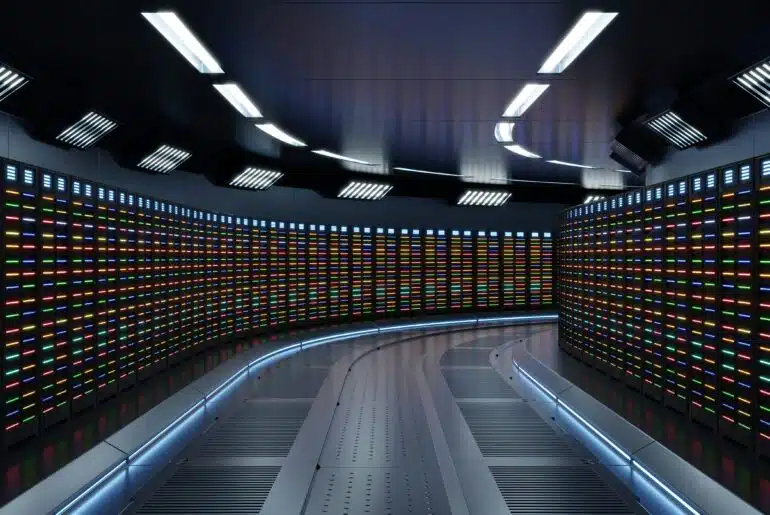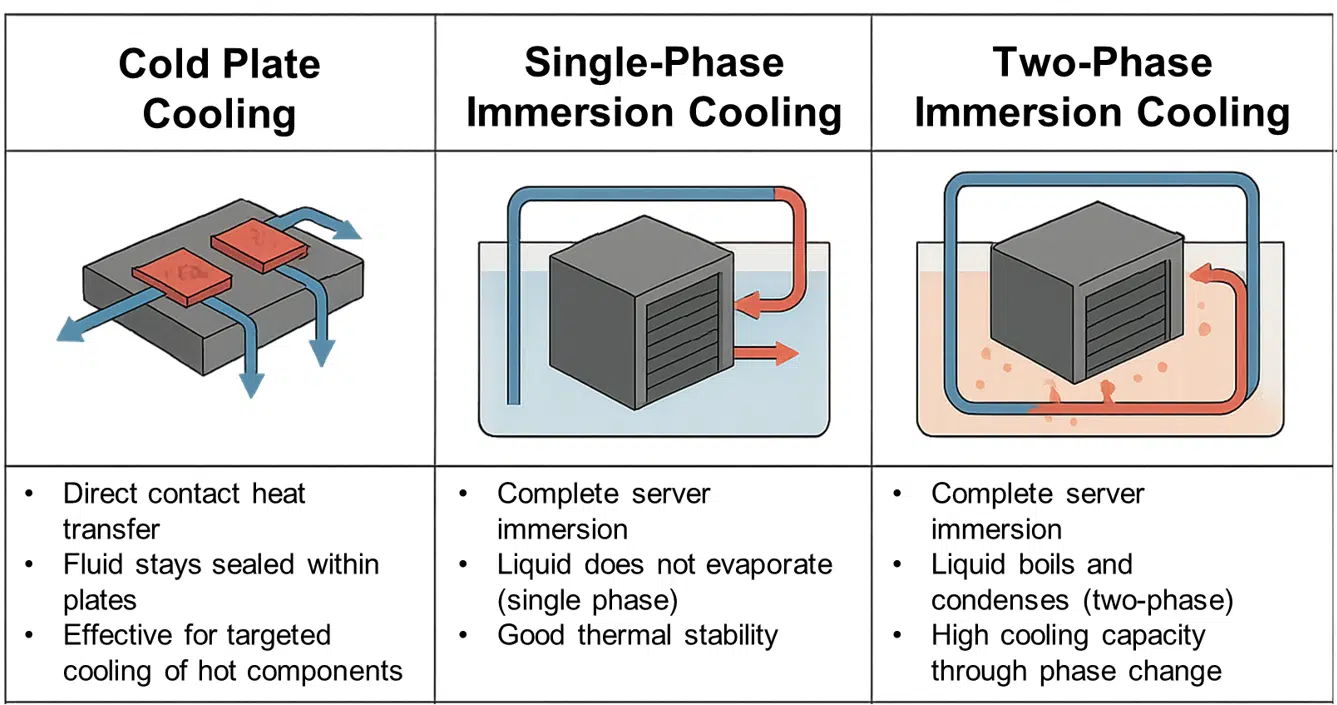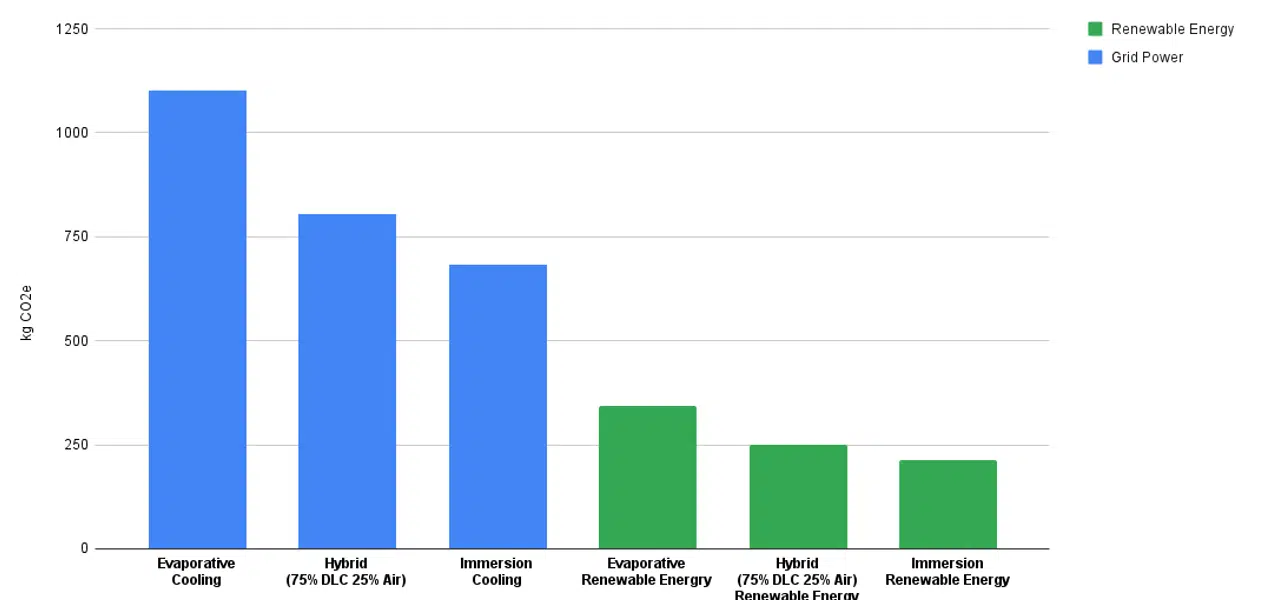AI touches every corner of our lives—from streaming your favorite show, to suggesting that funny meme, to protecting your home via your security system. Despite all these benefits, AI has one big problem: heat.
The explosive rise of AI has pushed U.S. data center electricity use from less than 2% of the grid in 2018 to projections as high as 12% by 2028. And with electricity consumption comes heat; cooling usually accounts for more than 10% of that load.
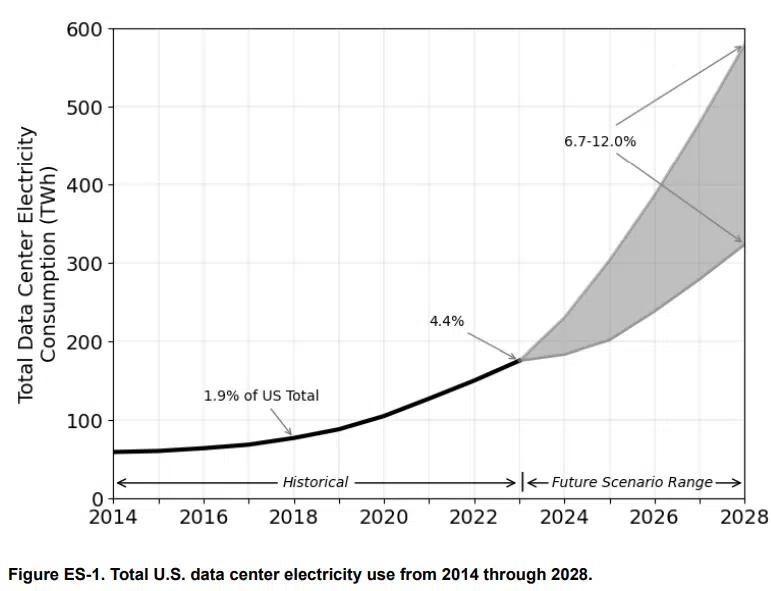 Source: Berkeley Lab, 2024 United States Data Center Energy Usage Report
Source: Berkeley Lab, 2024 United States Data Center Energy Usage Report
WHAT HIGH-PERFORMANCE DATA CENTERS LOOK LIKE IN 2025
Traditionally, CPU and GPU clusters—the high-speed computing units housed in data centers—have been cooled down using air cooling, mostly like how we cool our houses; however, air cooling is no longer an efficient option for cooling the next generation of GPU clusters that AI now relies on, primarily because the newer generation of GPUs consumes significantly more electricity and produces substantially greater amounts of heat. Given this cooling conundrum, how can data center owners and operators drive down their energy consumption and carbon footprint?
The answer lies in liquid cooling technologies, notably:
-
- Cold plates
- Single‑phase immersion
- Two‑phase immersion
These technologies transfer heat up to 1,000 times faster than air cooling, significantly reducing energy demands. Further, liquid cooling enables denser data centers due to reduced need for HVAC and other traditional cooling infrastructure, which in turn improves space efficiency and reduces land requirements. This usually leads to lower structural material requirements, notably concrete, steel, and MEP systems, the main sources of embodied carbon in a data center. This is critical, as embodied emissions are becoming increasingly important as grids decarbonize.
DATA CENTER CARBON FOOTPRINTS
Let’s briefly explore the average operational and embodied carbon footprints of data centers through three graphics, highlighting some advantages that liquid cooling offers.
- Embodied carbon distribution in a data center building.
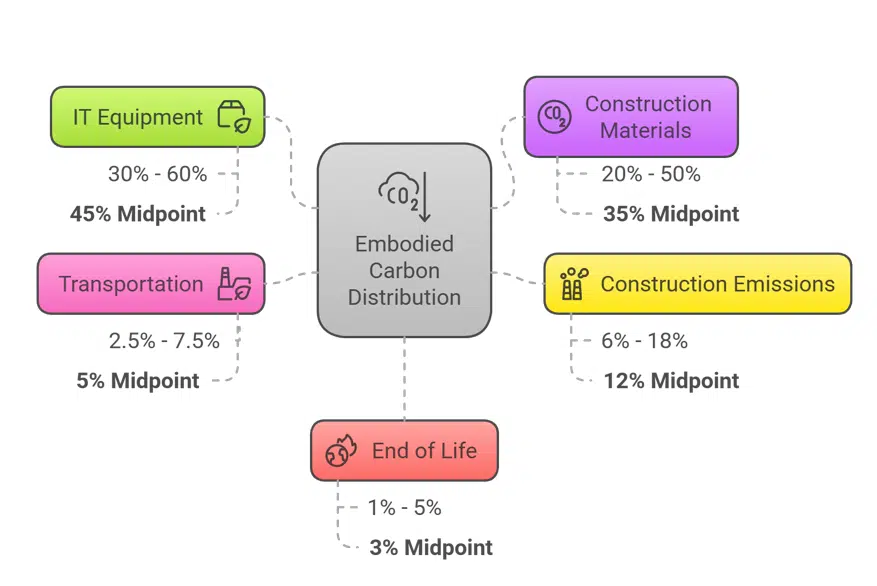
- The embodied carbon footprint of evaporative versus immersion cooling systems in data centers, largely seen in emissions associated with roof decks, slabs, sheathing, HVAC, and water consumption (Hassel, 2025).
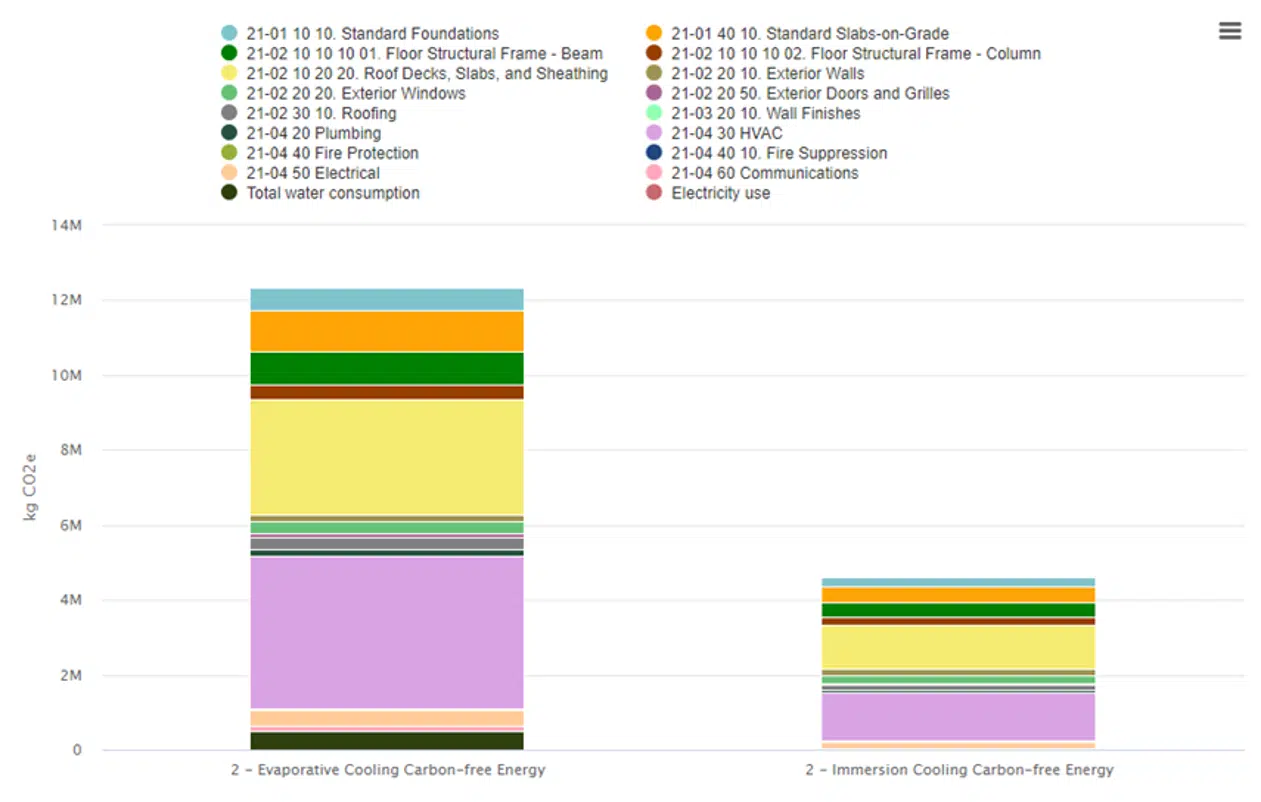
- The carbon footprint of different cooling systems in data centers with and without the use of renewably sourced grid power (Hassel, 2025).
RECOMMENDATIONS FOR DEVELOPERS AND DESIGN TEAMS
For data center developers and design professionals, we recommend the following to reduce your project’s carbon emissions:
-
- Deploy liquid cooling at scale. While the initial deployment may be challenging—as is often the case with new technologies—the environmental benefits, rapid heat dissipation capabilities, and, most importantly for data center providers, the potential to significantly increase compute density can offer major advantages.
- Specify liquid‑ready floors now, even if your first tenant is air‑cooled.
- Procure with whole‑life carbon criteria, requiring suppliers to disclose embodied carbon via environmental product declarations (EPDs). This is even more important when using new liquid cooling technologies.
- Rethink layout, designing denser IT for fewer AHUs, shorter cable runs, and reduced real estate costs.
- Capture waste‑heat revenue—50°C outlet water is perfect for district heating or absorption chillers.
- Educate stakeholders to show that liquid is no longer novel and major hyperscalers have published immersion pilots.
IN CONCLUSION
Whether you are leasing colocation suites or designing hyperscale campuses, liquid cooling is a highly impactful lever to shrink both operational and embodied carbon while meeting the relentless demand of AI. Early adopters are already seeing faster ROI through downsized plants, deferred grid upgrades, and new revenue streams from heat reuse.
Does this sound cool to you? Contact our team to discuss your data center project.
Source: Hassel, W. J. (2025). Liquid versus air: Life cycle carbon of cooling down AI data centers (Master’s thesis, Harvard University).

